BLOG
2018.01.20 update
Why Japanese vehicles can keep in good condition for a long time?
As many people recognize Japanese vehicles as high quality, they have long work lives. Even after they are used years in Japan, they are sometime exported to other countries and get a second life. Today we would like to share why Japanese vehicles get this kind of good reputation and welcomed by many countries.
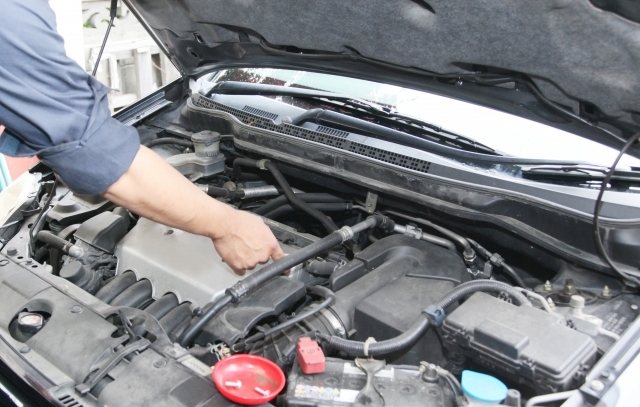
From my opinion, the main reason why Japanese vehicles can keep in good condition is because we have “Shaken” system. Shaken means Motor Vehicle Inspection in Japanese. All commercial vehicles in Japan are required to take this inspection each certain year after you register/use the vehicle.
This inspection system was started from 1930 only for taxies and buses to settle the quality of transportation in Japan. In 1951, it became the duty for all commercial vehicles and passenger vehicles except Kei Vehicles (small vehicle), and, in 1973, this system was also applied for Kei Vehicles.
Please see below chart for the brief system of the Valid Term for each kind of vehicles.
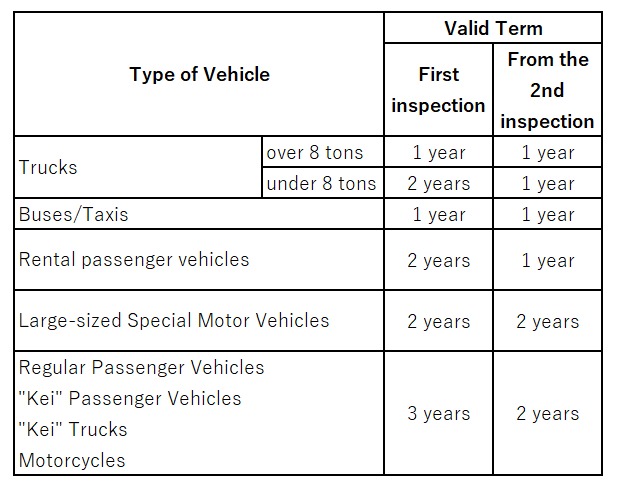
After the first registration of the vehicle, you need to have First Inspection as chart shows. If you do not follow this system and did not re-new your inspection certificate of the vehicle, those vehicles cannot run on Japanese public roads. Also, you need to stick this kind of special sticker on the windshield of the vehicle, to show that your vehicle has passed the inspection.
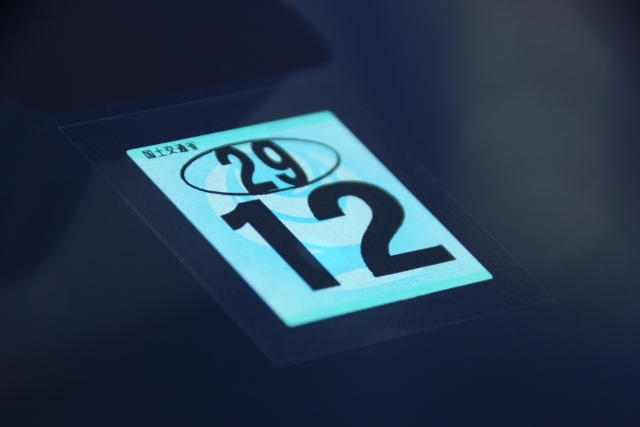
So! We have this Shaken system for vehicles to ensure the quality of the vehicle and run safely, but how much would it cost? Inspection fee itself is not too expensive compare to another country, it is JPY 3,000, which is around 30 USD. However, don’t you image that these inspections are costly? I do. This is because we must pay for Car Tax and Automobile Liability Insurance at the same time, so total cost rounds up to JPY 50,000 (500 USD) in average.
As I was researching about other country’s vehicle inspection system, I have noticed some country does not have any inspection required, some have yearly inspection required for all the vehicles, or, in some other countries, they do not even have to have inspection for 10 years if they buy brand new vehicles.
On the other hand, in Japan, we are recommended to take regular checkups for vehicles other than those scheduled Shaken inspection. Of course, to pass Shaken, the vehicle must be maintained well, but for example, even break pad is a bit worn out, if it is still above the inspection standard, they sometimes do not change the pad to make the most of the usable parts.
However, after a while, this might cause serious accident because break did not work properly, so we take regular checkups to keep the high vehicle quality. In this regular check, oil or other small parts like brake pad will be changed for safer driving. Also, it will lead to eco-drive as well, as fuel efficiently will perform better! So, we have another regular check for vehicles occasionally to prevent car accidents.
It’s quite expensive and hustle to bring your car to Shaken inspection and regular checkups occasionally, but Japanese people know it will cost/bother them more if their vehicles are not maintained well and cause troubles afterwards. For the safety of pedestrian, bikers, and all the vehicle drives, it is important to maintain your vehicles regularly. Also, I think this would be the reason why we can keep the vehicles condition good for a long time in Japan.
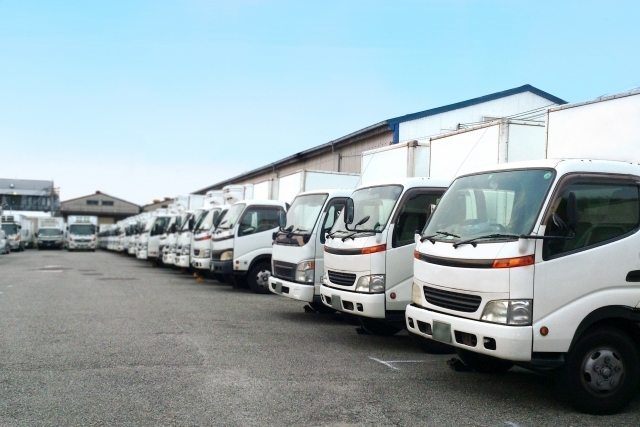
---------------------------------------------------------------
Japanese Used Trucks & Machinery Exporter
Yamada Sharyo Co., Ltd.
Website / Contact Us / About Us
Search Trucks / Search Machinery
---------------------------------------------------------------
- LATEST ARTICLES
-
-
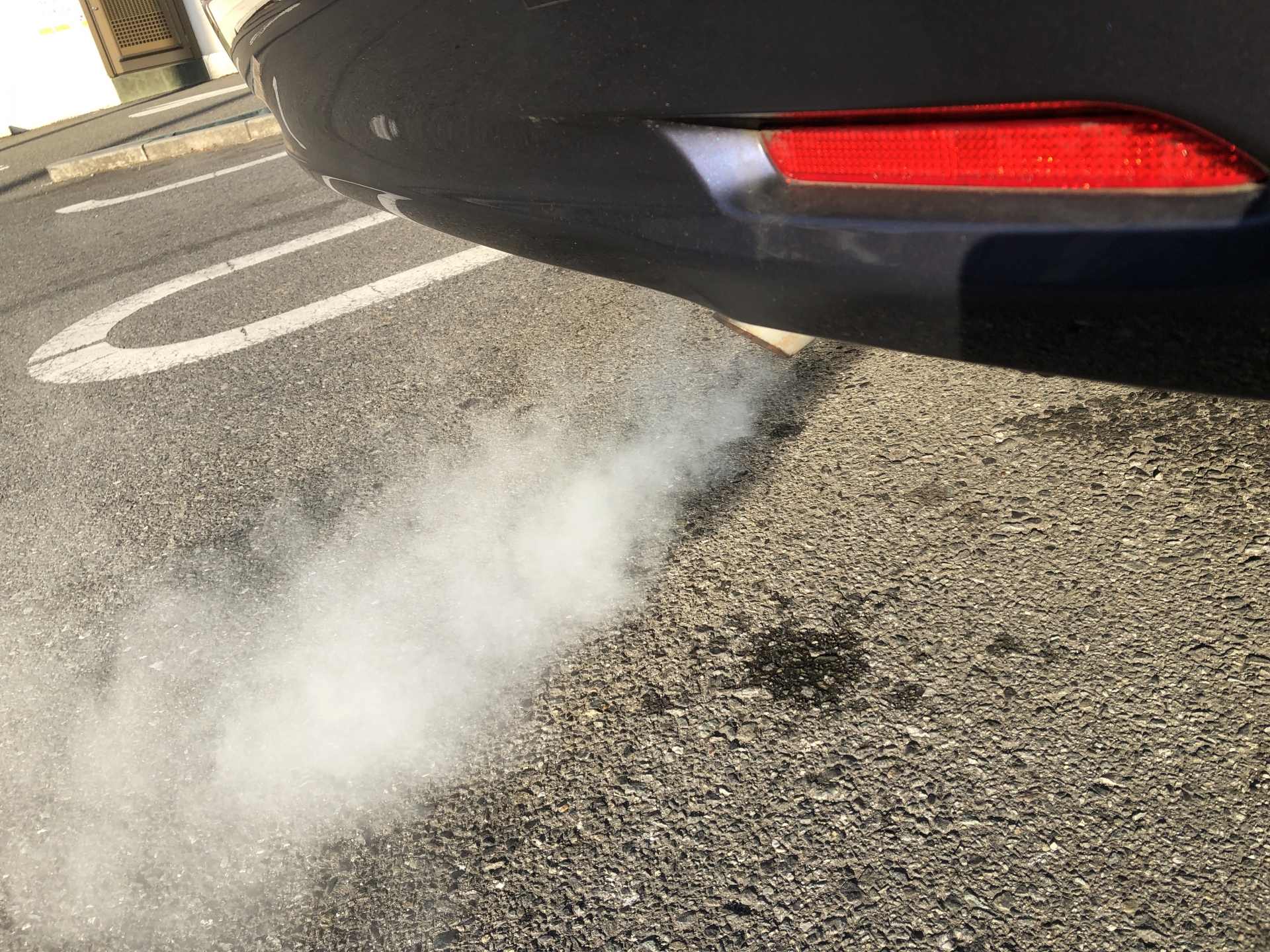
2022.04.05
Mitsubishi Fuso Truck and Bus Corporation Introduces New "Euro 4" Compliant Lineup to Indonesian Market
-

2022.03.22
We Opened Facebook Page and Instagram!
-

2022.03.08
Recent Best Sell!
-

2022.02.22
Japanese made excavator brand ‘YANMAR’
-

2022.01.05
Special Announcement ~AUCTION & EXPORT SERVICE STARTS!~
-
- CATEGORY
- ARCHIVES
-
- 2022-04(1)
- 2022-02(1)
- 2022-03(2)
- 2022-01(1)
- 2021-01(2)
- 2021-06(2)
- 2021-03(1)
- 2021-09(1)
- 2021-07(2)
- 2021-08(1)
- 2021-12(4)
- 2021-11(1)
- 2021-02(2)
- 2021-05(3)
- 2021-10(2)
- 2021-04(3)
- 2020-04(8)
- 2020-02(4)
- 2020-01(4)
- 2020-07(4)
- 2020-05(3)
- 2020-12(2)
- 2020-08(3)
- 2020-10(3)
- 2020-06(6)
- 2020-09(3)
- 2020-03(5)
- 2020-11(2)
- 2019-01(3)
- 2019-12(4)
- 2019-08(3)
- 2019-11(5)
- 2019-04(7)
- 2019-02(4)
- 2019-05(4)
- 2019-06(4)
- 2019-07(3)
- 2019-09(4)
- 2019-10(4)
- 2019-03(3)
- 2018-02(4)
- 2018-05(4)
- 2018-06(7)
- 2018-10(4)
- 2018-07(4)
- 2018-11(5)
- 2018-09(4)
- 2018-08(4)
- 2018-03(5)
- 2018-12(3)
- 2018-04(6)
- 2018-01(4)
- 2017-12(8)








